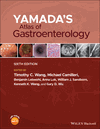Drug-induced liver injury
Summary
Drug-induced liver injury (DILI) is mechanistically classified as being either direct or indirect. Direct hepatotoxins can cause liver injury in all exposed individuals and are typically linked to the dose or duration of use. Indirect hepatotoxicity arises when the biological action of the drug on either the liver or immune system can lead to liver injury rather than its direct toxic or idiosyncratic properties. The proposed pathogenesis of idiosyncratic DILI implicates host genetic, immunological, and metabolic factors as well as drug and environmental factors. The best example of drug biotransformation involves acetaminophen hepatotoxicity. Causality assessment methods typically include temporal relationship, course after drug cessation, risk factors, consideration of concomitant drug usage, exclusion of nondrug causes, previous information concerning the drug, and response to rechallenge. Supportive care for DILI includes use of antiemetics and antipruritics but patients with severe nausea and vomiting, coagulopathy or hypoglycemia may require hospitalization.



